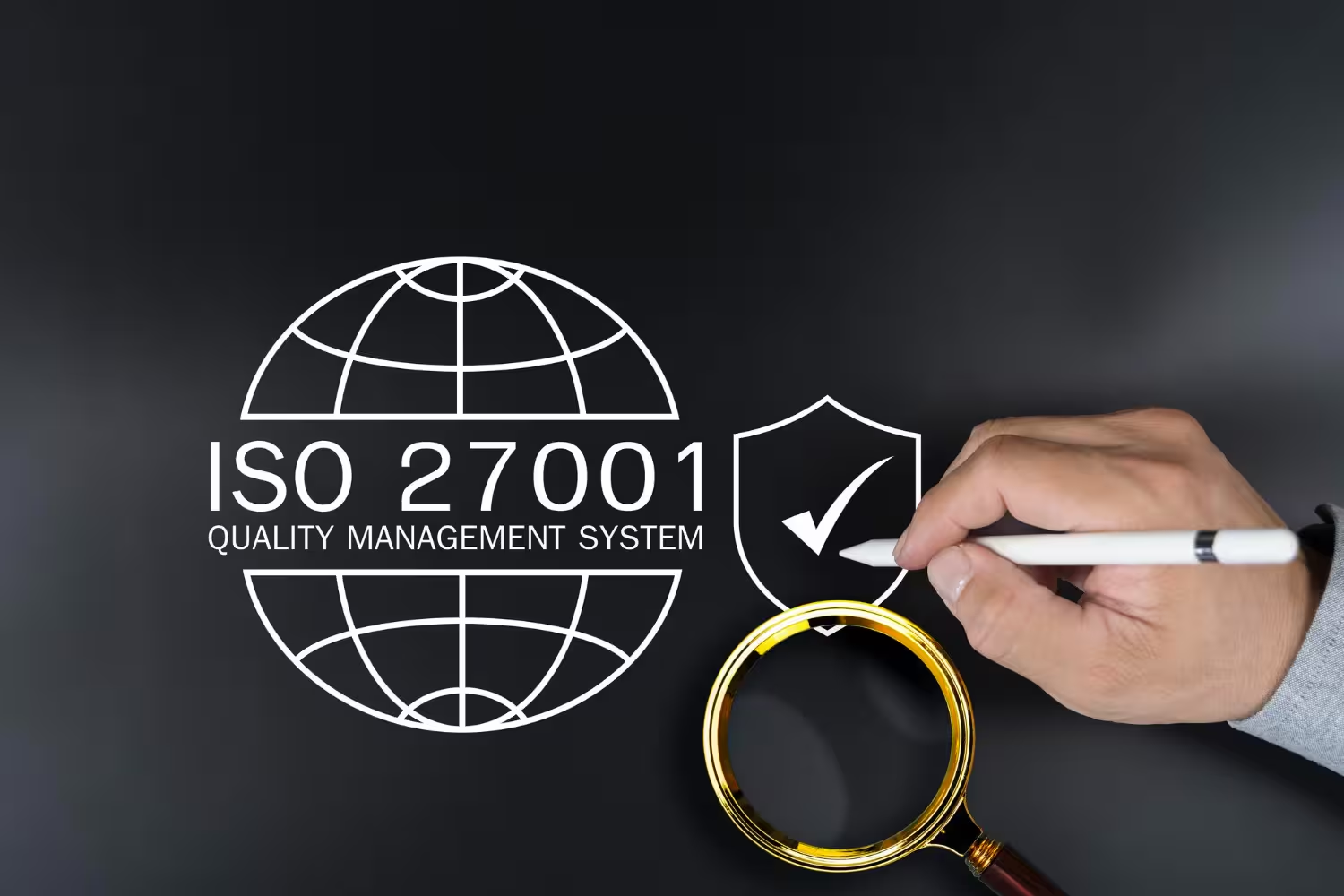Compliance Training for Healthcare: How to Succeed
We’ve all sat in on bad training sessions before, especially if they’re compliance-related. But what does a program look like for healthcare entities?

We’ve all sat in a classroom where the teacher or professor stands at the front of the class and drones on about their topic. This type of class also involves some sort of Powerpoint presentation or scribbles on a chalkboard or whiteboard. The sound of the chalk scratching across the green calcium carbonate slab, rustling of papers and clearing of throats by the fellow students will always stay as an embedded memory of mine.
What else comes to mind with that style of class? Sleepy students with their heads down, daydreaming and watching the seconds tick around a 1950s clock also come to my mind. At some point, you would snap out of your daze yet stay confused over the topic.
That style of class is still widely used today across many public, private, state, and ivy league schools and universities. Obviously, since it’s such a common structure for learning it must be the most effective way to teach new concepts, right?
Students are almost twice as likely to fail when enrolled in a stand-and-deliver lecture styled classroom.

Now let’s switch gears. If you’re reading this blog post it’s likely that you’re a professional, working in corporate America. Since the topic I’ll cover relates to compliance training for healthcare (don’t worry, we’re getting there) it’s likely that you work within that industry. If you’re not, get out. I’m only kidding, you’re welcome to stay and continue to read.
Since you’ve joined the wonderful world that is healthcare, you’ve also likely participated in training at this point (see I told you I was going to get there). Yes, if you’re a doctor, nurse, or another type of healthcare professional you’ve basically lived and breathed training your whole life. There are two different types, though; medical-related training and business-related training.
For the purpose of the point I’m going to make, I’m going to focus on business-related training. The last time you sat in one of those sessions, what was it like? I’m not talking about the team-building exercise trip you took with your team to establish camaraderie. I’m talking about the one where the leader at your Human Resources department went over your new vacation policy.
What did that training session look like?
If it’s anything like the ones I’ve sat through, they featured the HR employee standing at the front of the meeting room table, talking about the new policy and using a PowerPoint as their guide to ensure they cover everything.
How did you react to this “important meeting”?
You might’ve looked out the window, thinking about all of the other tasks you need to complete by the end of the week, blocking out all information getting fed to you.
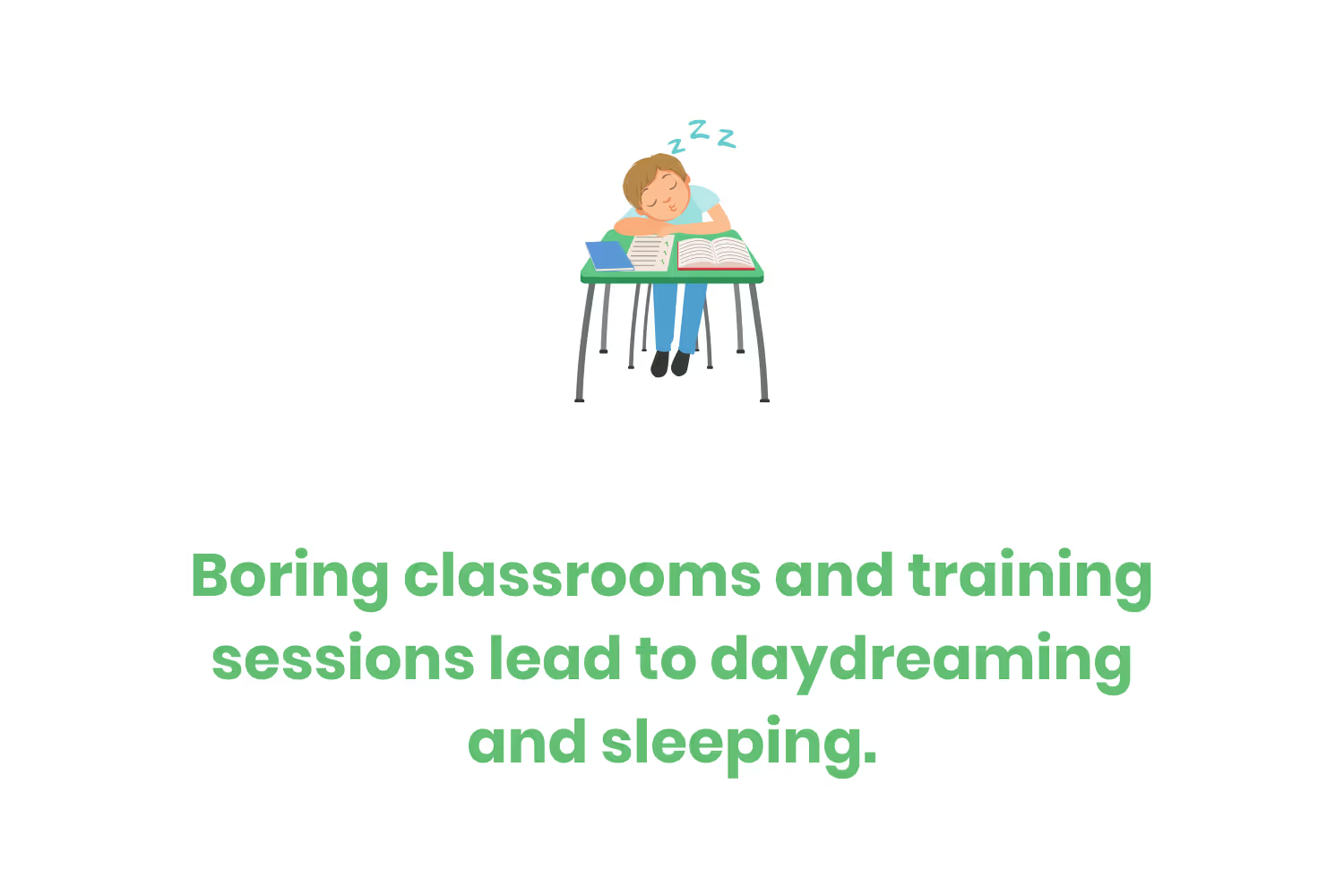
My point after all of this is that the lecturing style of teaching doesn’t start and end in the classroom setting. It continues on in the corporate world as well but changes its name from “class” to “training”.
Most trainings don’t come with a grade attached to them, so no big deal if you don’t pay attention to them. You could always go to that one coworker of yours who’s always paying attention and get their summary afterward anyway.
Unless, of course, you’re sitting through your healthcare organization’s annual compliance training session. During that session, they’re covering what is and isn’t allowed according to the Health Insurance Portability and Accountability (HIPAA) law. If you don’t pay attention, you could end up making an unintentional mistake down the road that costs thousands of dollars and your career.
It’s not just a matter of forcing yourself to pay attention, though. It’s also the trainer’s responsibility to make it interesting. If they continue to create and host boring training sessions, they’ll lose their audience. Half of people who drop out of high school say boredom was their primary motivator for leaving.
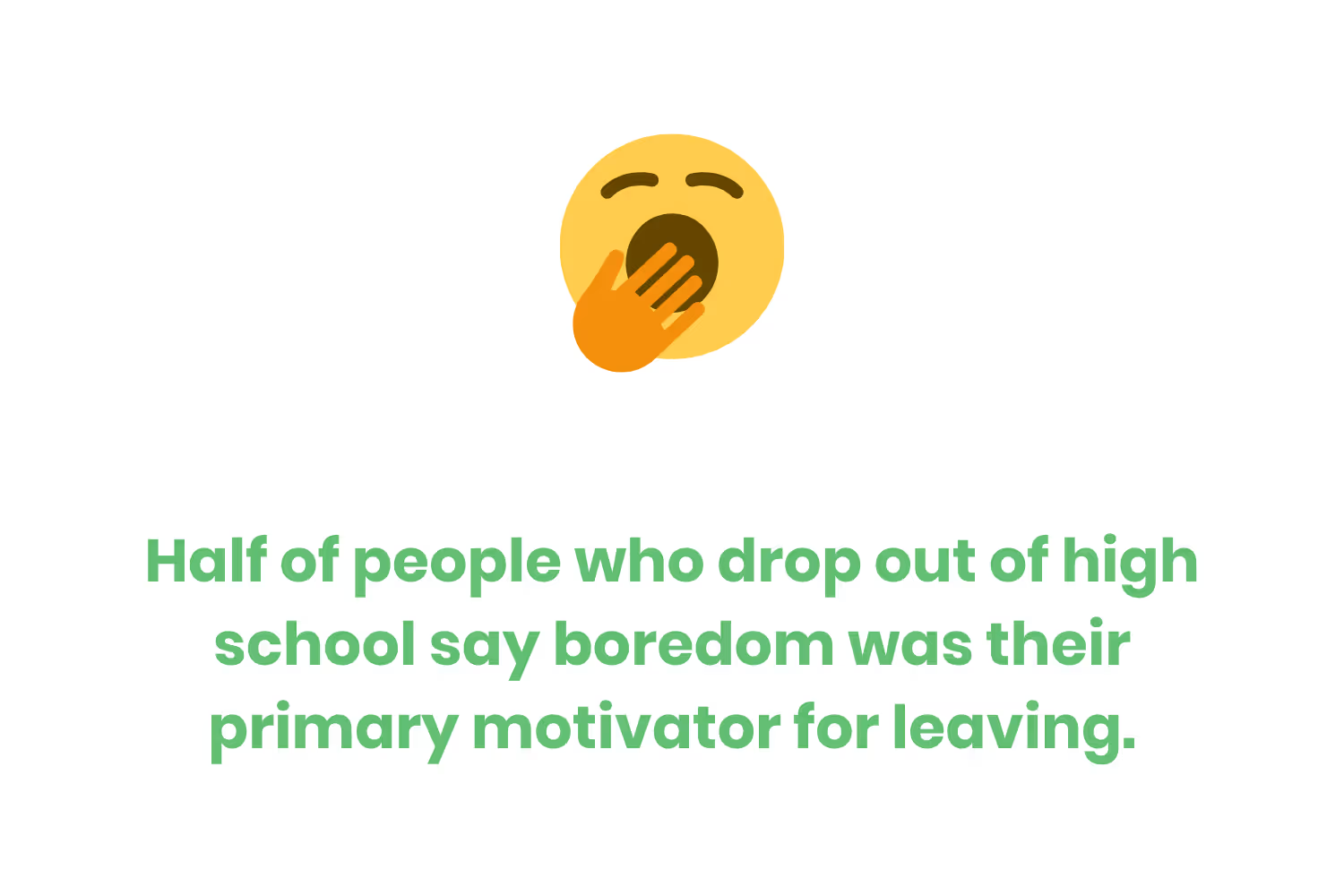
Maybe you’re the trainer, if that’s the case I applaud you for your desire to want your sessions to succeed. But what does a successful compliance training program look like for healthcare entities?
Use Active Learning Principles
There has to be a teaching style that works, right? There’s no way I just spent all of that time in the introduction to this blog post to not have a solution.
Well, you’re right. I do have a solution and it’s called active learning. In a nutshell, active learning is essentially doing the opposite of the type of learning I mentioned before.
Don’t hold a presentation where you’re standing in the front of your conference room, lecturing on like a dull politician does during a filibuster. You’re not going to convince anyone to listen to your compliance training like that.
Instead, get your team involved. Everyone sitting in the training session already works together so they probably also know each other well enough to collaborate (hopefully). They’ve also spent all day or all week sitting at their desks, typing and clicking away at their computers.

Involve them in the training session.
Get them out of their seats, split them off into teams and have them work amongst themselves to learn the concepts you’re going over. Pose a compliance question or scenario to the entire group and let each group come up with a decision on their own within a time limit. Once complete, have a member from each team present the room with their decision and then break it down with them as to why it would work or wouldn’t.
While reading that last paragraph you might’ve had some flashbacks from classrooms that ran this way. I’ll venture to say that you could probably still name the teacher of that class and what subjects you covered. That memory of yours speaks for itself as proof of active learning’s effectiveness.
If you didn’t have a flashback or didn’t have a class that ever ran that way know that active learning classes boost student grades by at least 6%. That’s the difference between a C- and a C.
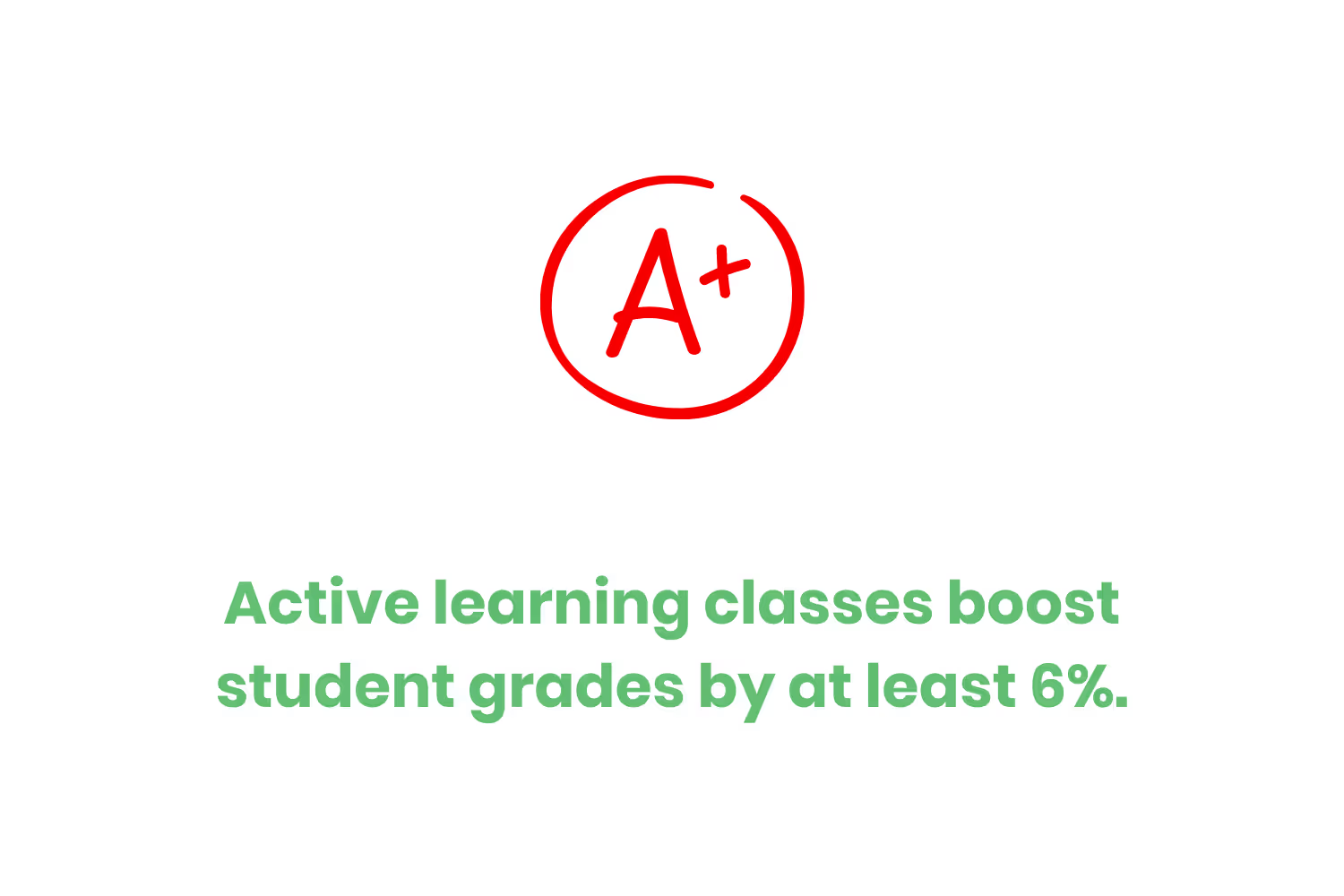
Give Quizzes and Grades
Did you ever have a professor or teacher who didn’t believe in quizzes or tests? I have.
If you can relate, you might have a similar thought to mine. I didn’t really feel like I learned anything in that class. In fact, I don’t even remember what subject it was (unless it was a dream all along).
I’ve also experienced a professor who doesn’t care about anything other than quizzing and testing students. In that one, I always felt stressed out or under pressure but I definitely still remember the acronym PEMDAS, what it stands for, and how to solve a simple algebraic problem.
So what was the difference between these two professional educators? Well, one of them probably read the psychology study that found that taking tests often produces a better recall of facts and understanding of concepts (thank you, Mr. Robinson).
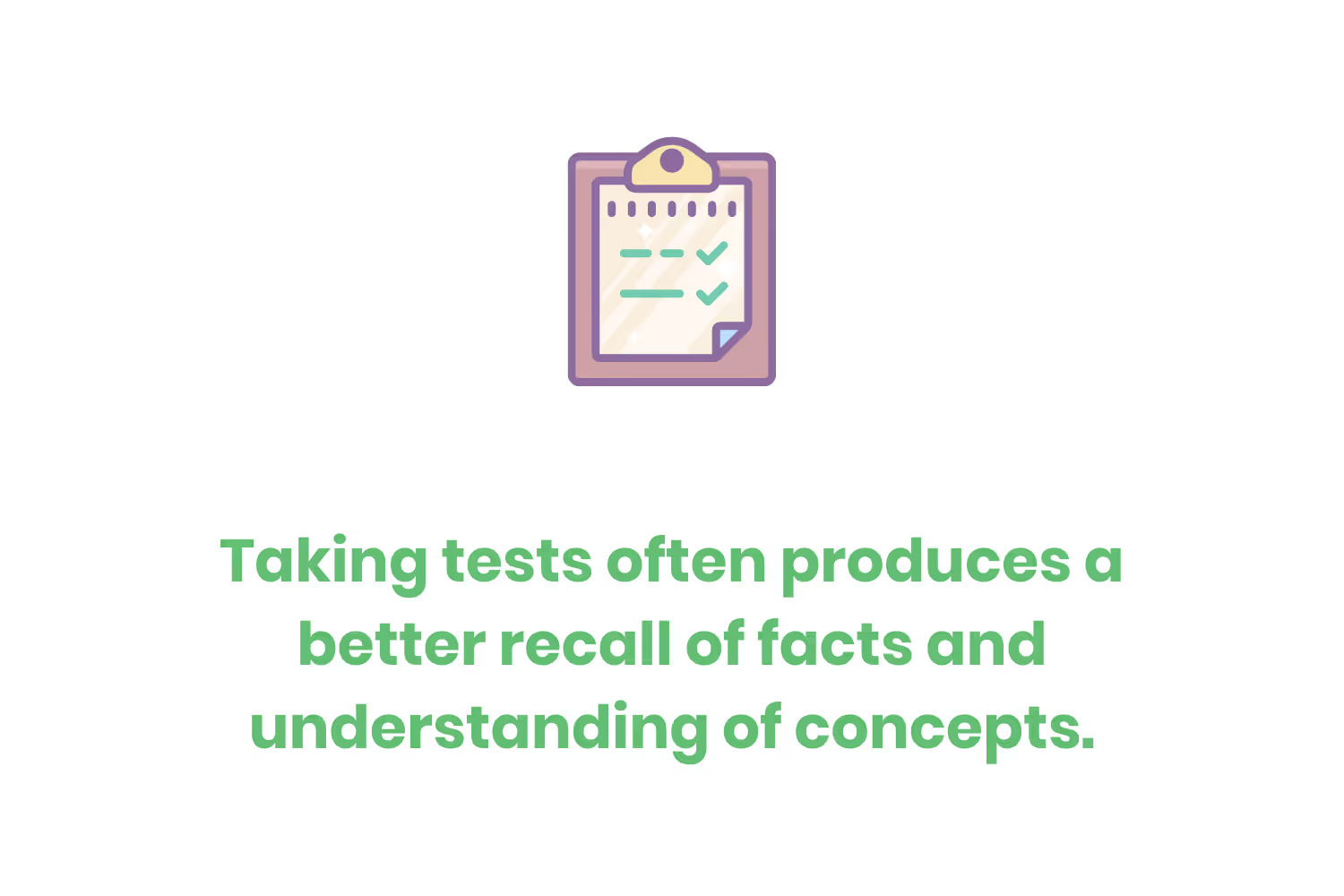
The reality is that tests and quizzes work. To some, those two words are enough to make them feel anxious. What happens if you fail?
Well, failing isn’t an option for compliance training. If you’re the one holding the training session and those employees participating don’t “pass”, you’re not doing your organization any favors. You’ll soon have a HIPAA violation on your hands.
In other words, you need to include some form of quizzing and/or testing during your compliance training but you can’t allow your team to fail.
How do you pull that off?
There are two ways you could pull this off. The first is what I’ll call “the lazy way”. One of the worst HIPAA compliance training sessions I’ve ever experienced was online (the irony based on what’s to come).
I’m not going to call out the organization that did it, I don’t want to be cruel. Instead, I’ll describe it for you. It was a paginated web page “program” that looked reminiscent of websites from the 1990s. It featured a cut-out image of an older lady in the left-hand corner, she was the narrator. In the center of the screen was the transcript. To the right were the “Back” and “Next” buttons. Do you have the visual?
The “narrator” would “read” the transcript to you, which was her explanation of the intricacies of HIPAA compliance. Once she finished babbling the words already written on the page, she would pose a question to you. Of course, you couldn’t just read at your own pace, you had to listen to what she had to say and could only move forward once she stopped talking.
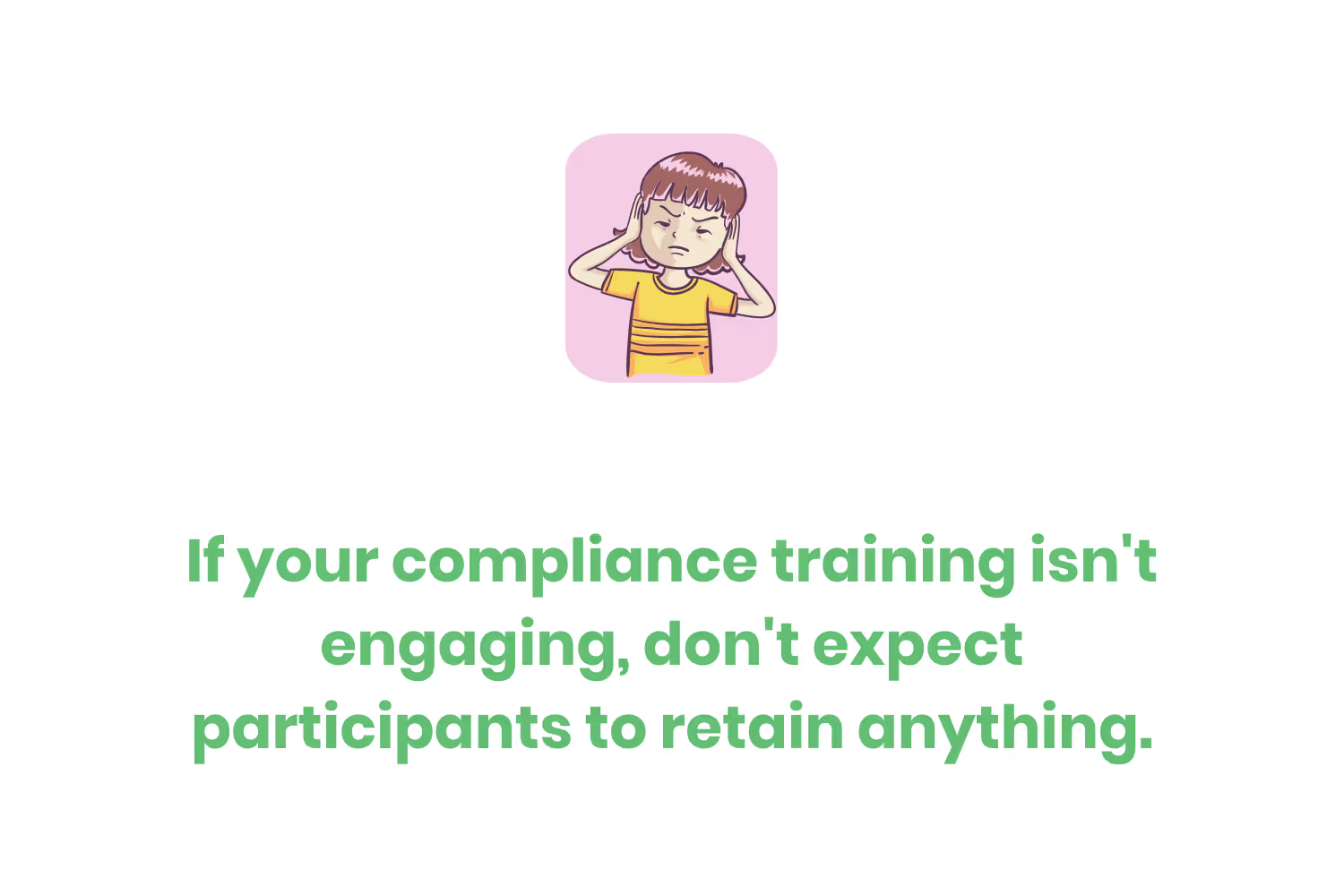
The questions weren’t bad. They were informative yet simple. However, if you got it wrong you couldn’t continue until you got it right. It doesn’t sound terrible at first. After you answer about 5 questions, though, you start to realize that you don’t even need to care about the questions. You let her drone on in the background while you do your work, then once she’s done you select a random answer. If it’s wrong, you go back and select another random bubble and repeat this process until you miraculously get it right. Worthless. I didn’t learn anything from that training.
The second way is what I’ll call “the right way”.
In this scenario you watch engaging videos and/or look at beautiful graphics that explain important concepts. Then, once you’re done going through everything at your own pace, you answer multiple-choice questions in a test format.
Once you’ve completed the exercise, you submit your test, it gets graded instantly and your result comes back. Let’s say your grade comes back and you scored a 53%, not good. What happens? Well, your compliance manager meets with you to figure out what happened and you take it again. This time you get to the questions and they’re different, yet still related to the module.
This time, you actually pay attention to the content and choose your answers with confidence. On your second attempt, you score an 88%. It’s not perfect, but it’s better than good enough for the compliance department.
Some professional educators use this strategy in their classrooms and found that allowing multiple attempts at tests provide a true learning opportunity.
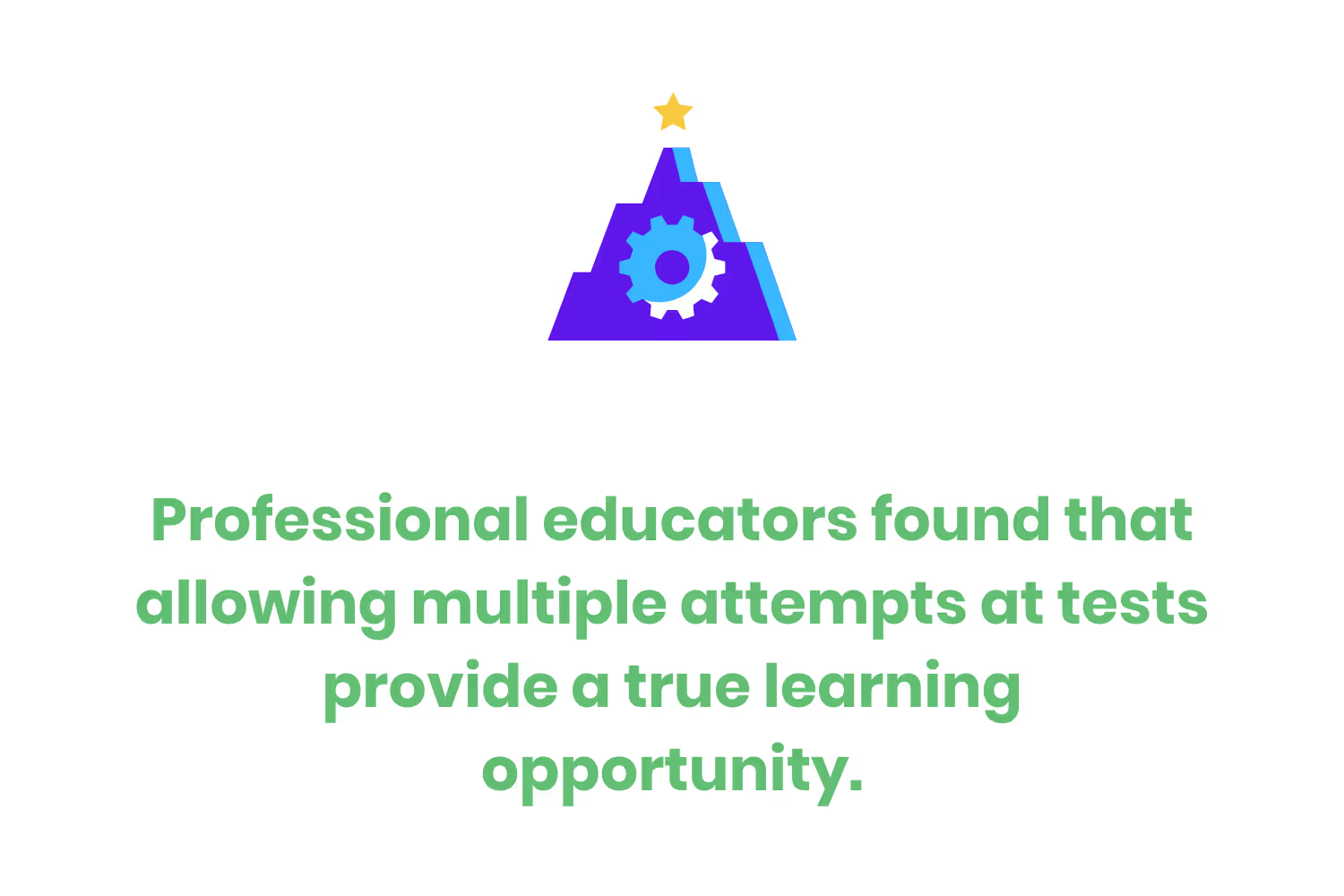
Incorporate Fun
Do you remember what Kindergarten was like as a kid? You couldn’t wait to come to school, be with all of your new friends and do activities all day (I was partial to building blocks).
Now, what were classes like while you got older? You certainly weren’t going to different stations, using your imagination and working in groups, not as often at least. Excluding hormonal differences from when you were a child, you probably weren’t as excited about those classes either.
What’s the difference between those two experiences? Yes, on one hand, you’re learning your ABC’s while on the other you’re enrolled in Calculus I. The point I’m trying to make is that there was an aspect of “fun” in everything that you did in your early education.
I’m sure you had some “fun” sessions throughout your education. I certainly had teachers who had us play their version of “Jeopardy!” on days before big tests to help us review.
If you went to college, that mostly disappeared. It was all academics.

It would probably help most educators if they knew that when students feel more engaged and motivated they achieve higher cognition and experience more “aha” moments.
It also helps you while you’re designing your compliance training program.
If you plan on implementing the active learning strategies that I pointed out earlier, your “students” are already separated into groups. Use that to your advantage and turn a segment of the session into a fun game.
Look for The Online Option
We’re almost a quarter into the 21st century, everything that’s relevant is online in some capacity.
That’s a bold statement, sure, but think how different your job is now compared to the late 20th century. Just in the past few years, we've seen massive changes with more doctors and patients adopting telehealth.
Not to mention the portability of everything that’s hosted on an online platform.
Depending on the type of organization you’re working within, host your compliance training in an online format might be the best route.
The technical term for this is “e-learning” and it boosts retention rates up to 60%.
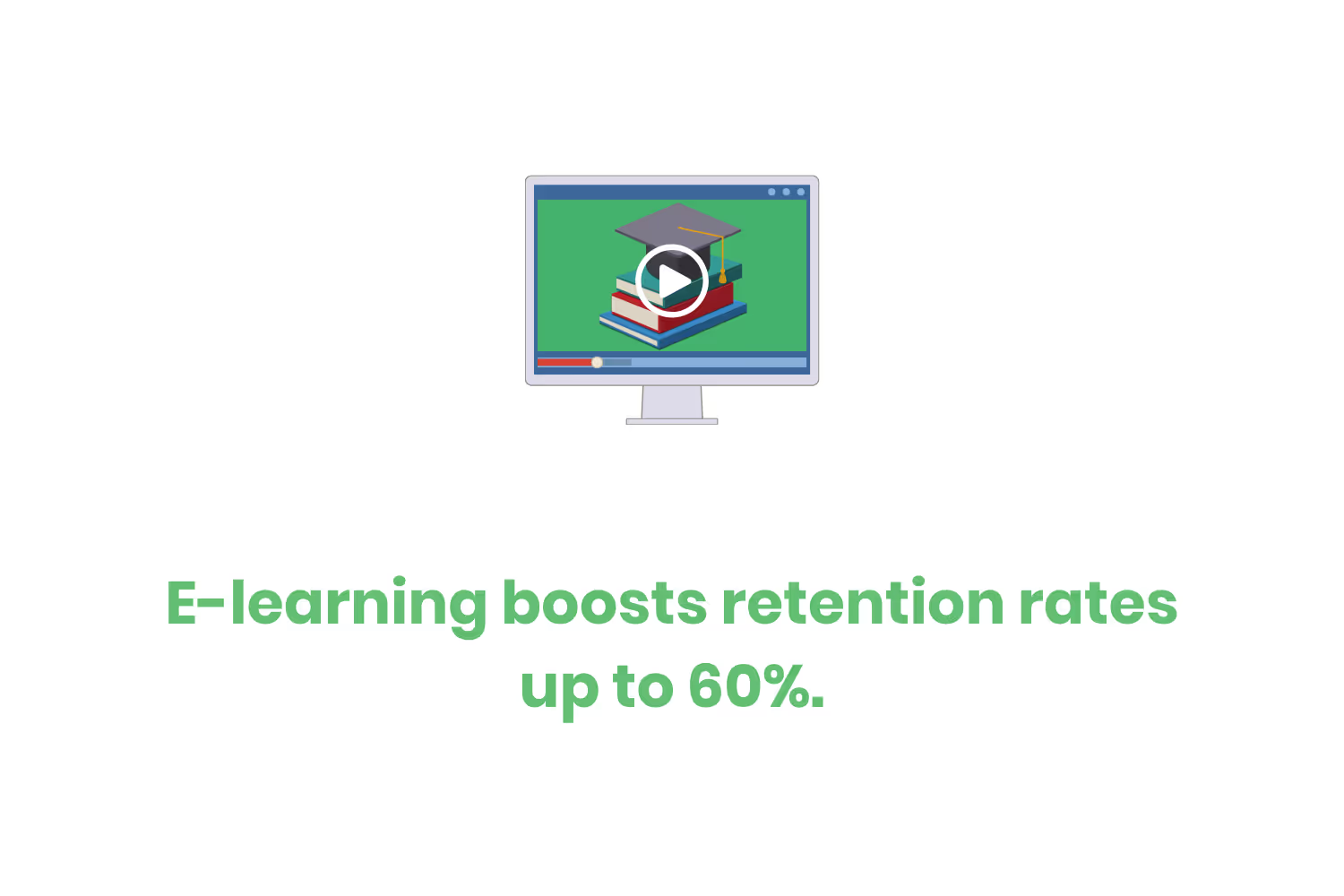
Online training allows your employees to complete it at their own pace. You send the content and a deadline, maybe a week or so in advance. In other words, they won’t have to stop what they’re doing right that second and lose their train of thought.
This form of training also takes 40% to 60% less time to complete on average. So, even when it’s giving them luxuries like taking it when they want and at the pace they want, the modules still take less time.
Of course, not everything is gumdrops and cotton candy.
How successful your online compliance training module depends on the content. If your session is anything like the one I described in the previous section with an outdated user-interface, contains a novel’s worth of text, and/or is flat out boring it won’t succeed.
Here’s a quick example of an e-learning class that doesn’t see much success. Massive open online courses (MOOC) exist for many students as an option, yet only 10% of those who register complete them.
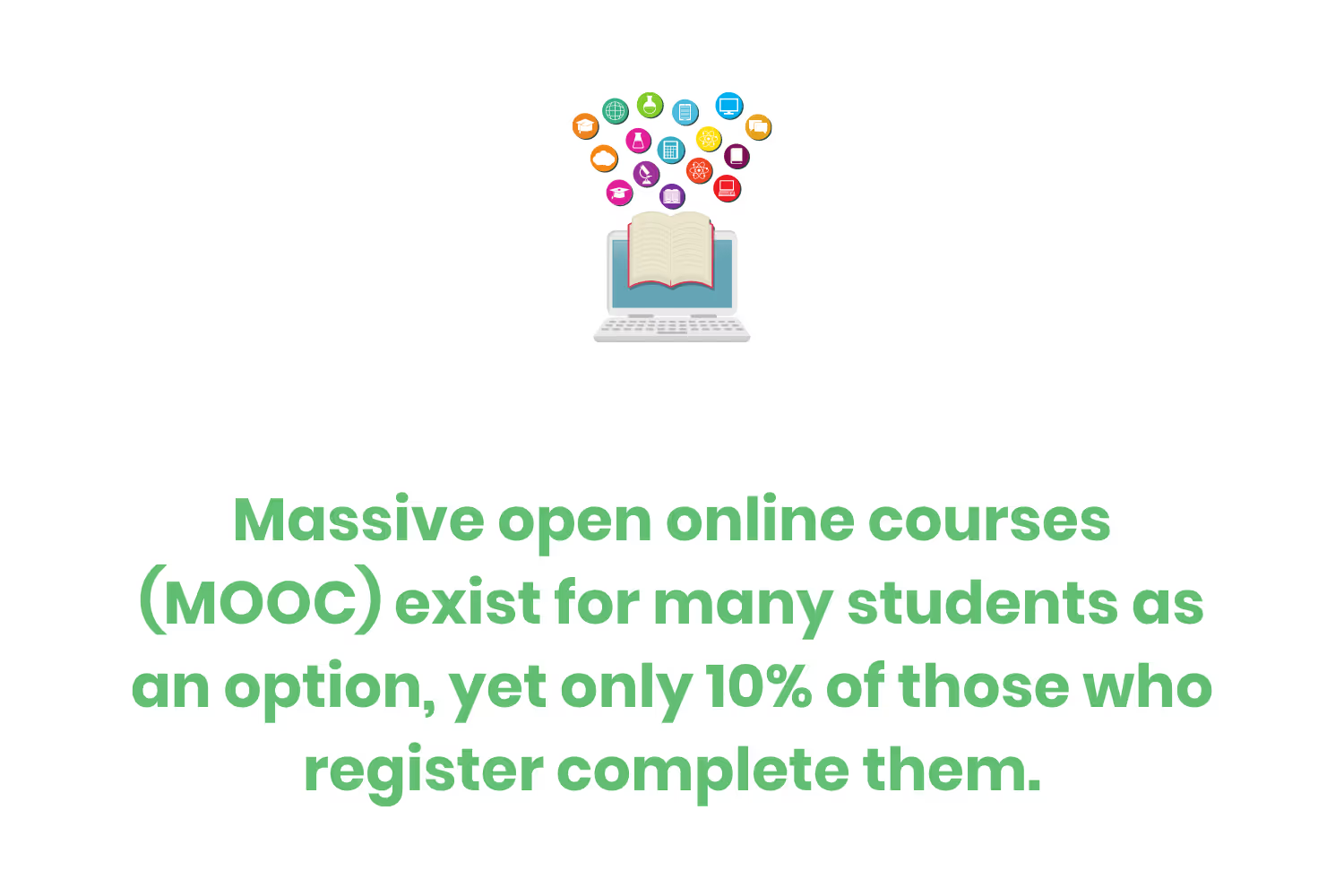
Taking a boring training course and hosting it online isn’t effective, you’ll have to make the content engaging for it actually work.
Handout Rewards Upon Completon
If you attended college, it was all worth it in the end once you graduated and received your degree. The pessimistic students would like to bring up their debt and say they spent all of that money on a fancy piece of paper. Sure, a degree is technically a piece of paper but there is so much more extrinsic value associated with it.
It’s the ultimate goal and once you’ve achieved it you feel like you’re on top of the world.
Why not reward those who complete compliance training with something similar? Of course, it’s not going to be as prestigious as a degree from an accredited university. That’s not what I’m trying to say. A certification acknowledging their achievement is still a nice gesture.
I’m going to be honest with you and say that your employees probably aren’t going to frame their compliance certification. However, they still might share it with their network.
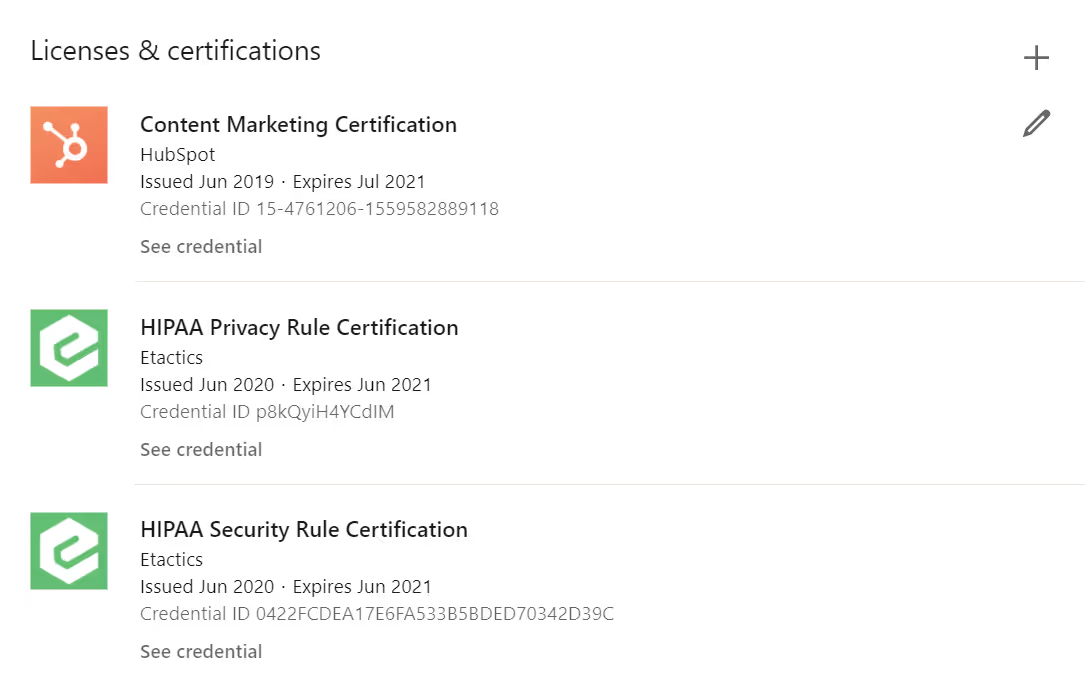
LinkedIn provides an area on everyone’s profile to upload and share any licenses and/or certifications with the world. I guarantee that if you were to encourage your team to upload the fact that they’re now compliant in healthcare, they would. It makes your organization look more credible and makes them look more like an expert.
Conclusion
There are a lot of ways you can make your compliance training for your healthcare organization successful. But there’s only one aspect that ties everything together, your content. If you don’t have engaging content you might as well accept the fact that a high percentage of your employees are going to sit through your sessions daydreaming about their weekend plans.
Once you’ve got the content, though, everything else will start to fall in place. Posing interesting discussion topics naturally leads to a more active learning environment featuring exciting games and quizzes that foster success.
Take a long, hard look at what your current compliance training module looks like. If it’s anything like the bad examples I’ve shared throughout this blog post, you’re only hurting yourself. Outdated, boring and lecture-y workshops won’t keep your employees engaged and you shouldn't expect them to. You won’t want to have to discipline your team members for something that you could’ve helped them avoid all a long.
After all, did you stay engaged during boring classes throughout your educational career?
Emphasize your product's unique features or benefits to differentiate it from competitors
In nec dictum adipiscing pharetra enim etiam scelerisque dolor purus ipsum egestas cursus vulputate arcu egestas ut eu sed mollis consectetur mattis pharetra curabitur et maecenas in mattis fames consectetur ipsum quis risus mauris aliquam ornare nisl purus at ipsum nulla accumsan consectetur vestibulum suspendisse aliquam condimentum scelerisque lacinia pellentesque vestibulum condimentum turpis ligula pharetra dictum sapien facilisis sapien at sagittis et cursus congue.
- Pharetra curabitur et maecenas in mattis fames consectetur ipsum quis risus.
- Justo urna nisi auctor consequat consectetur dolor lectus blandit.
- Eget egestas volutpat lacinia vestibulum vitae mattis hendrerit.
- Ornare elit odio tellus orci bibendum dictum id sem congue enim amet diam.
Incorporate statistics or specific numbers to highlight the effectiveness or popularity of your offering
Convallis pellentesque ullamcorper sapien sed tristique fermentum proin amet quam tincidunt feugiat vitae neque quisque odio ut pellentesque ac mauris eget lectus. Pretium arcu turpis lacus sapien sit at eu sapien duis magna nunc nibh nam non ut nibh ultrices ultrices elementum egestas enim nisl sed cursus pellentesque sit dignissim enim euismod sit et convallis sed pelis viverra quam at nisl sit pharetra enim nisl nec vestibulum posuere in volutpat sed blandit neque risus.

Use time-sensitive language to encourage immediate action, such as "Limited Time Offer
Feugiat vitae neque quisque odio ut pellentesque ac mauris eget lectus. Pretium arcu turpis lacus sapien sit at eu sapien duis magna nunc nibh nam non ut nibh ultrices ultrices elementum egestas enim nisl sed cursus pellentesque sit dignissim enim euismod sit et convallis sed pelis viverra quam at nisl sit pharetra enim nisl nec vestibulum posuere in volutpat sed blandit neque risus.
- Pharetra curabitur et maecenas in mattis fames consectetur ipsum quis risus.
- Justo urna nisi auctor consequat consectetur dolor lectus blandit.
- Eget egestas volutpat lacinia vestibulum vitae mattis hendrerit.
- Ornare elit odio tellus orci bibendum dictum id sem congue enim amet diam.
Address customer pain points directly by showing how your product solves their problems
Feugiat vitae neque quisque odio ut pellentesque ac mauris eget lectus. Pretium arcu turpis lacus sapien sit at eu sapien duis magna nunc nibh nam non ut nibh ultrices ultrices elementum egestas enim nisl sed cursus pellentesque sit dignissim enim euismod sit et convallis sed pelis viverra quam at nisl sit pharetra enim nisl nec vestibulum posuere in volutpat sed blandit neque risus.
Vel etiam vel amet aenean eget in habitasse nunc duis tellus sem turpis risus aliquam ac volutpat tellus eu faucibus ullamcorper.
Tailor titles to your ideal customer segment using phrases like "Designed for Busy Professionals
Sed pretium id nibh id sit felis vitae volutpat volutpat adipiscing at sodales neque lectus mi phasellus commodo at elit suspendisse ornare faucibus lectus purus viverra in nec aliquet commodo et sed sed nisi tempor mi pellentesque arcu viverra pretium duis enim vulputate dignissim etiam ultrices vitae neque urna proin nibh diam turpis augue lacus.



